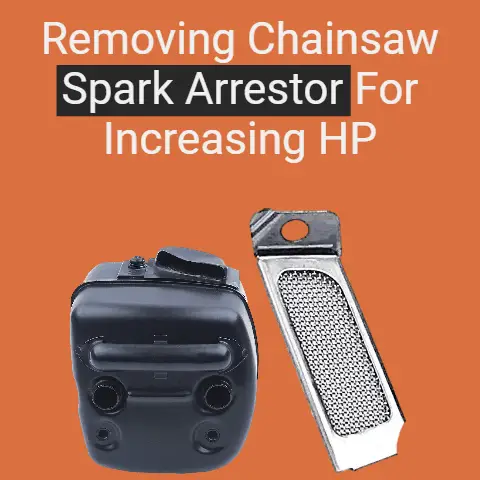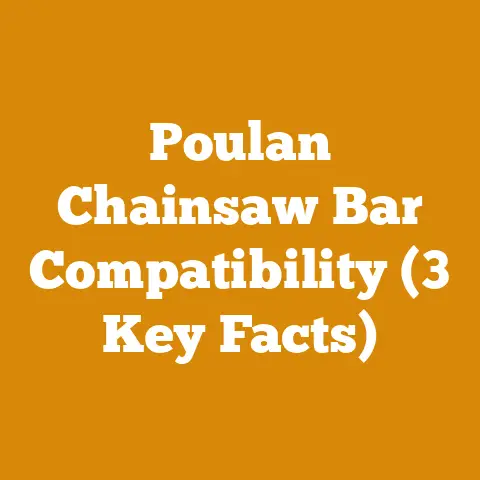Difference in Oregon Chains (4 Key Factors)
Did you know that over 36 million chainsaws are in use worldwide? That’s a lot of woodcutting, and Oregon chains play a big role in making sure those saws work efficiently.
If you’re like me, you’ve probably spent a good chunk of time figuring out which chains work best for your specific needs.
Here, I’ll break down the differences in Oregon chains into four key factors, while sharing some personal insights and experiences.
1. Chain Type
Oregon offers several types of chains, and choosing the right one can make all the difference.
Let’s talk about a few of them:
Full Chisel Chains
Full chisel chains are designed for fast cutting.
They have square-cornered teeth that are great for cutting through hardwoods.
I remember one time when I was tackling a big oak tree in the backyard.
The full chisel chain made quick work of it, and I was done before lunchtime.
- Pros: Fast cutting speed
- Cons: Quick to dull, especially in dirty conditions
Detailed Use Case
Let me tell you about the time I used a full chisel chain during a community project to clear fallen trees after a storm.
We had limited time and resources, so speed was crucial.
The full chisel chains were like a dream—cutting through thick trunks with ease.
However, after a few hours, I noticed they started to dull because of the debris and dirt embedded in the wood.
Semi-Chisel Chains
Semi-chisel chains have rounded corners on their teeth, which makes them more resilient.
They might cut a bit slower, but they stay sharp longer in rough conditions.
- Pros: Durable, stays sharp longer
- Cons: Slower cutting speed
Personal Experience
I once took on a project where I had to clear a large area of land that was overgrown with bushes and small trees.
The conditions were tough—lots of dirt and grit.
The semi-chisel chain was my go-to because it could withstand these harsh conditions without losing sharpness quickly.
Low Profile Chains
These are often used on smaller saws and are great for beginners.
They’re safer and produce less kickback.
- Pros: Safer, less kickback
- Cons: Limited to smaller saws
First-Time Use Story
I recall helping a friend who was new to chainsaws.
He was nervous about kickback, so we opted for a low-profile chain.
It made him feel more confident and safe as he learned how to handle his new tool.
2. Pitch
The pitch of a chain refers to the distance between its links.
Oregon offers several pitch sizes, and choosing the right one is crucial for safety and performance.
Common Pitches
- 3/8″ Pitch: Most common for professional use.
- 0.325″ Pitch: Often found on smaller saws.
Selecting the Right Pitch
When selecting a pitch, consider the type of work you’re doing.
For heavy-duty tasks, a larger pitch might be necessary.
I remember using a 3/8″ pitch chain during a storm cleanup, and it handled the thick branches like a champ.
In-Depth Analysis
Understanding pitch is more than just knowing numbers; it’s about matching your chain with your saw’s sprocket system.
For instance, during one project involving dense hardwoods, using a mismatched pitch led to inefficiencies and increased wear on my saw.
3. Gauge
The gauge of the chain refers to the thickness of the drive links.
This is critical for ensuring that the chain fits snugly on the bar.
Common Gauges
- 0.050″ Gauge: Standard size for most saws.
- 0.058″ and 0.063″ Gauges: Used for heavy-duty applications.
Why Gauge Matters
Having the correct gauge ensures that the chain won’t slip off the bar, which is crucial for safety.
During one project, I mistakenly used an incorrect gauge, and it resulted in a frustrating afternoon of readjustments.
Real-Life Consequences
Using an incorrect gauge can be disastrous.
A while back, I ignored this detail on a job site in rugged terrain; my chain kept slipping off, causing delays and potential hazards.
4. Drive Link Count
The number of drive links helps determine if a chain will fit your saw’s bar length.
Determining Drive Link Count
To find the correct drive link count, check your saw’s bar or user manual.
Mismatching this can lead to improper tension and increased wear.
Personal Example
I once bought a chain with too few drive links for my bar, and it didn’t fit properly.
Lesson learned: always double-check!
Prerequisite Knowledge
Before diving into these factors, it’s important to have basic knowledge of chainsaw maintenance and operation.
Understanding Your Chainsaw
Knowing how to operate your chainsaw is foundational.
Once, I saw someone struggle because they hadn’t read their manual thoroughly—missing out on crucial setup steps.
Required Materials
- Appropriate Oregon chain
- Chainsaw
- Safety gear (gloves, goggles, ear protection)
Additional Tools You Might Need
- Chain sharpener or file
- Bar wrench
- Lubrication oil
Safety Precautions
Always wear safety gear when operating a chainsaw.
Double-check all components before starting any cutting project.
Important Safety Tips
- Inspect Your Chain Regularly: Look for wear or damage.
- Maintain Proper Tension: Prevents accidents from a loose chain.
- Stay Alert: Be mindful of your surroundings; fatigue can lead to mistakes.
A Safety Story
I recall an incident where a friend skipped his safety check in a rush—his chain broke mid-operation due to improper tensioning.
Thankfully, no one was hurt, but it was a wake-up call for all involved.
Tips and Warnings
- Tip: Regularly inspect your chain for wear and replace it as needed.
- Warning: Never use a chain with incorrect pitch or gauge—it can be dangerous.
Pro Tips from Experience
- Always carry a spare chain when working remotely.
- Use proper lubrication to extend chain life.
- After sharpening, test your chain on scrap wood before tackling major tasks.
Common Questions
Q: How do I know when my chain needs replacement?
A: If it’s dull or damaged or if there’s excessive vibration during use, it’s time for a new one.
Q: Can I sharpen my Oregon chain at home?
A: Yes, with the right tools and technique, you can sharpen it yourself.
Detailed Answer
For sharpening at home:
- Secure the saw.
- Use an appropriate file size.
- Follow the existing angle of the cutters.
- Use even strokes across each tooth.
- Maintain consistent pressure throughout.
Troubleshooting Tips
- Chain Keeps Coming Off: Check tension and ensure correct gauge.
- Chain Dulls Quickly: Use an appropriate chain type for material being cut.
Advanced Troubleshooting
- Chain Won’t Cut Straight: Ensure teeth are evenly filed; check bar alignment.
- Excessive Vibration: Inspect sprockets and drive links for wear or damage.
- Heating Issues: Ensure proper lubrication; check oil output settings.
Maintenance Best Practices
Regular maintenance prolongs your tool’s life and ensures safety.
Weekly Maintenance Checklist
- Clean bar groove.
- Check and adjust tension.
- Inspect sprockets for wear.
- Lubricate moving parts.
- Sharpen chain as needed.
Monthly Deep Clean Routine
Every month or after heavy use:
- Remove cover plates; clean debris.
- Inspect clutch assembly.
- Check fuel filters if applicable.
- Inspect all bolts and fasteners for tightness.
Personal Maintenance Routine Story
Following this routine helped me avoid costly repairs after intense logging sessions last summer when temperatures soared unexpectedly high.
Conclusion
Understanding these key differences can help you choose the right Oregon chain for your needs.
Always prioritize safety and proper maintenance to keep your chainsaw running smoothly.
Final Thoughts
Remember that each project might require different setups; don’t hesitate to experiment within safe boundaries to find what works best for you!
FAQs
Q1: What’s the best chain type for hardwood?
A: Full chisel chains offer fast cutting through hardwoods.
Q2: How often should I replace my chainsaw chain?
A: It depends on usage but generally when it’s dull or damaged.
Q3: Can I use any Oregon chain on my saw?
A: No, ensure compatibility based on pitch, gauge, and drive link count.
Understanding these factors can really improve your chainsaw experience.
If you have any questions or need help choosing the right chain, feel free to reach out!






